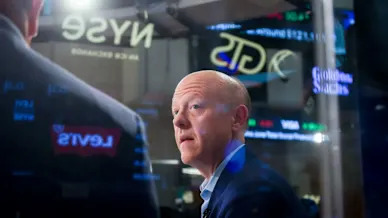Stablecoin issuers like Circle and Tether are gobbling up more Treasuries than most countries. Here’s how that could reshape the U.S. economy
- August 9, 2025
- Category:

Stablecoins are the shiny new object on Wall Street. Once restricted to the niche world of crypto trading, stablecoins entered the mainstream of U.S. finance as Congress debated—and ultimately passed in July—a bill to legitimize them and expand their use. That has spurred a hype cycle as banks and Fortune 500 companies rush to explore the technology.
Stablecoins, which are typically pegged to the U.S. dollar and backed 1:1 to a pool of reserves, have been around for a decade. But their soaring popularity has brought mounting questions over how their growth could impact the broader economy. Financial experts and government officials alike are grappling with the implications of giant stablecoin issuers Tether and Circle becoming some of the largest holders of U.S. Treasuries, rivaling countries like South Korea and Saudi Arabia.
While crypto proponents argue that stablecoins will help extend dollar dominance across the globe, critics warn that they could lead to financial instability in the banking sector, even as they remain a tiny portion of overall markets.
A new financial plumbing
To get a sense of stablecoins’ growing popularity, it’s worth noting that their transaction volume surpassed Visa in early 2024. While much of this activity occured in the context of crypto trading, it supported advocates’ case that stablecoins’ low fees and near-instantaneous speeds make them a superior vehicle to older technology like SWIFT, especially when it comes to moving money across borders. That argument has broken out of the crypto industry, with the fintech giant Stripe acquiring the stablecoin startup Bridge last year for $1.1 billion.
In order to ensure a stablecoin maintains on par with a dollar, most issuers purchase large quantities of Treasury bills to serve as the bulk of their reserves. Tether, the largest stablecoin issuer, holds over $100 billion in T-bills, according to its latest attestation, which ranks it ahead of countries such as the United Arab Emirates and Germany. According to a July report from Apollo, the stablecoin industry as a whole is now the 18th largest external holder of Treasuries.
To be fair, this is still a blip compared to the U.S. money market fund sector, which stands at around $7 trillion, mostly comprised of Treasuries. But, especially with July’s passage of the Genius Act, stablecoins are only likely to grow, with Apollo estimating that the sector could reach $2 trillion by 2028. The market cap of USDC, the second-largest stablecoin, has grown 90% over the past year to $65 billion. Its parent company, Circle, went public in June, delivering the largest two-day IPO pop in decades.

